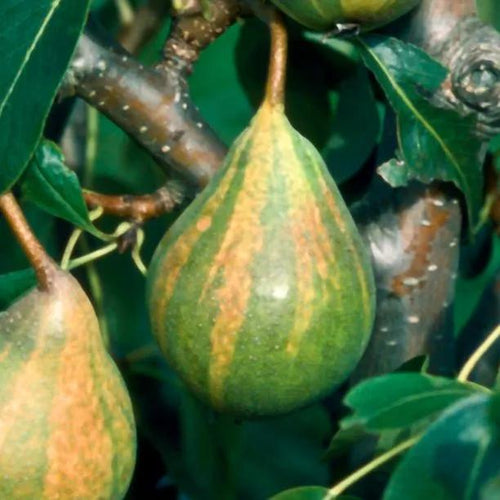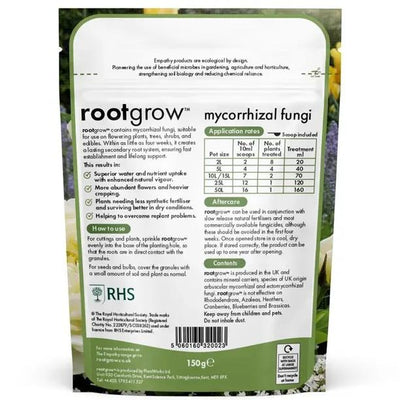Humbug Easter Pear Trees
'Humbug Pear, AKA Easter Egg, this decorative eating pear has very special skin, with unique vertical stripes that make them almost too pretty to eat. The skin is also very tough for a pear, which means that they store extremely well. They're a sweet, juicy eating pear when they finally ripen and the flesh is firm enough to hold together when you cook them. It isn't just the fruit that are stripy, the young shoots are too and look very nice in late winter and early spring.
The tree is hardier than most pears, so we recommend it if you live in the North or Scotland.
It's best to pick these pears during October and leave them to ripen in a cool, dry place for at least 2 months before you eat them, and they'll keep until March without refrigeration.
Humbug is a great pear to add to a collection, or grow for novelty as a cordon / espalier. We do not recommend it for your first or only pear tree, it isn’t as tasty as popular varieties like Conference, Concorde, or Comice, and takes longer to ripen.
Browse our range of pear trees or see the full variety of fruit trees.
Features
- Eating / Cooking
- Self Sterile.
- Pollination Group C
- Spur Bearer: suitable for cordons & training on wires.
-
Harvest: October.
-
Store & ripen in a cool, dry place: Until March.
Pollination Partners for Humbug:
To make fruit, all pear trees need to be pollinated by another variety. Humbug is in pollination group C.
This means that it'll cross-pollinate with trees in groups B, C and D
Please see our guide to Pollinating Pear Trees for a full list of partners for Humbug.
Growing Humbug Pear Trees:
Rich soil is important - dig in plenty of good manure and compost before planting.
Soil drainage must be good.
The more sun your trees get the better your crops will be.
History & Trivia
This pear is known as the Easter Egg (Pysanka) Pear in the Ukraine region, because of its painted appearance and the fact it can store in ideal root cellar conditions until the Easter celebrations in early Spring – but until New Years is more realistic. However, it's probably of early 19th Century Swiss origin, where it’s called Schweizerhosen: Swiss Trousers, as in the Pope’s Swiss Guard. The oldest record of stripy Swiss pears is from the 17th Century, presumably the ancestors of Humbug.

 Secure, One-Tap Checkout
Secure, One-Tap Checkout
 Hand Picked, Delivered to Your Door!
Hand Picked, Delivered to Your Door! 1 Year Bareroot Guarantee
1 Year Bareroot Guarantee










